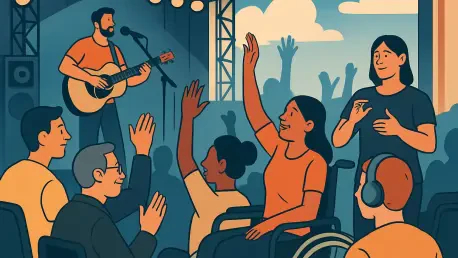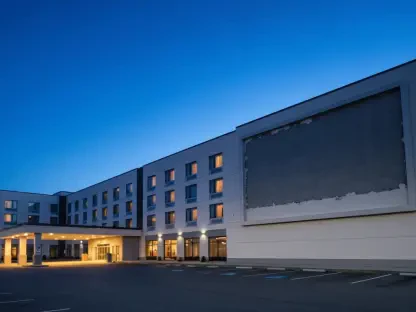In a world where more than 70% of people with disabilities report opting out of non-adaptive websites and venues, the significance of achieving accessibility at live events cannot be overstated. Conferences, talks, and exhibitions are crucial for connection, knowledge sharing, and innovation, yet often fall short in inclusivity. Accessibility needs to be integral from the beginning, not a hurried add-on. The European Accessibility Act mandates new standards, placing added pressure on digital platforms and organizers to prioritize accessibility now. By fully embracing this trend, events stand poised to lead toward more equitable participation and positively shift industry norms.
Breaking Down Event Essentials
At the core of meaningful accessibility are the often-ignored elements of a person’s experience: hearing, sight, mobility, and neurodiversity. Innovations and thoughtful planning are leading to transformative changes. Hearing support through human-assisted captioning, necessary for overcoming AI’s difficulty with emotion and accents, is making auditory experiences cohesive and accessible for all. By addressing visual challenges with descriptive slides and clear signage suited for everyone, events are becoming more inclusive. Mobility considerations extend beyond ramps, focusing on spatial arrangements, seating, and ease of movement. Neurodiversity is recognized through designs that promote comfort, using lighting and quiet spaces tailored for serenity and experience enrichment.
The Event Experience and Interactive Highlights
Throughout the event, pivotal discussions and practical workshops exemplified the essence of true inclusivity. Keynote speakers like Orla Pearson emphasized the imperative role of accessibility as a standard rather than a supplement. Workshops offered interactive engagements that allowed attendees to tackle real-world accessibility challenges. The profound insights garnered from these sessions directed attention to not just feasibility but the ethics and necessity of creating conducive environments. Detailed panels debated current technological advancements and their implications, guiding audience reflections on progress and actionable solutions.
Talks and Expert Insights
The event featured distinguished thought leaders whose discussions illuminated new perspectives. Expert conversations addressed the challenges and breakthroughs surrounding accessibility technologies and methodologies. Participants discovered that embedding inclusiveness directly into planning stages—not as an afterthought—is a strategy garnering acclaim, yielding more adaptable environments and engaging experiences.
Panel Discussions and Themes
Panels gave voice to expert opinions in vigorous debates, anchoring themes of inclusivity across various societal dimensions. Conversations expertly dissected topics from legislative imperatives to the pragmatic ramifications of accessibility within digital frameworks. These dialogues foster actionable conclusions, inspiring participants to carry these insights forward into implementations that reshape accessibility norms.
Workshops and Audience Engagement
Workshops stood out as prime examples of viewer participation and creative thinking. Attendees engaged in hands-on activities designed to spur understanding and integration of accessibility. These sessions promoted idea exchange, innovation, and collaboration, leaving participants with an enriched perspective on addressing diverse attendee needs effectively.
Innovations and Technology Unveilings
The event unveiled significant technological innovations, serving as a launch pad for accessible design. Product demonstrations showcased the potential of emerging tools to solve accessibility issues, emphasizing ease of use and adaptability. Revelations in technology underlined a commitment to designing more empathetic spaces that respond diligently to the public’s varied requirements.
Reflecting on Event Outcomes and Prospects
The event delivered a distinct message about accessibility’s future impact on industry standards and practices. Insights gained from discussions will lead to advancements in live events, setting benchmarks for inclusiveness. As accessibility becomes embedded, organizers anticipate fostering increased loyalty and community participation. Success lies in the ability to create empathetic environments that welcome everyone, confirming the importance of early and efficient planning. Stakeholders, encouraged to muse on whom they can invite, are on the cusp of ushering a future defined by diversity and empathy, where the essence of live events transcends mere dialogue, pivoting toward genuine inclusion.









